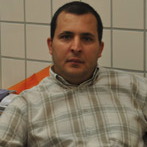Topic Editors



Scientific Advances in STEM: Synergies to Achieve Success, 3rd Volume
Topic Information
Dear Colleagues,
Following the previous special topics (scientific advances in STEM: from professors to students, 1st and 2nd editions), this new topic tries to highlight the importance of establishing synergies between research groups from different disciplines, combining the scientific knowledge from basic to applied research, as well as taking advantage of different research facilities. Fundamental science helps to understand the phenomenological basics, while applied science focuses on products and technology developments, highlighting the need to transfer knowledge to society and industrial sectors. This topic integrates interdisciplinary research of science and technology, including, but not limited to the following topics:
- Science and technology of materials
- Physics and applied mathematics
- Industrial and environmental chemistry
- Analytic chemistry
- Intelligent systems and electronic technology
- Product design, development, and engineering
- Computerized, robotic, and neuromorphic industrial systems
- Computer architecture and technology Particular Themes
- Coatings and nanostructured materials
- Development of functional materials for additive manufacturing (i.e., applications in biomedicine)
- Advanced optical characterization or nano- and microstructures and thin films
- Biopolymer from agro-food bioresidues
- Interfacial rheology and its applications
- Deep-learning systems for diagnosis, prevention, and pattern recognition
- Bio-inspired systems for sensory fusion and control
- Artificial intelligence in smart-city applications
- Energy forecasting and flexibility services
- Advances in food and by-product development and characterization
- New trends in sustainable cities and industries
- Intelligent and sustainable optimization of industrial engineering projects
- Multifunctional and smart toys for children with autism spectrum disorder
- Weighting with life cycle assessment and cradle-to-cradle (methodology for global sustainability design social and socio-economic life cycle assessment: towards quantitative methods in small and medium-sized enterprises)
- Analysis of emerging pollutants in environmental samples
- Biomechanical and biofunctional behaviour of porous materials
Dr. Ana María Beltrán Custodio
Dr. Manuel Félix Ángel
Topic Editors
Keywords
- solar energy applications
- additive manufacturing
- superficial modification
- functional materials
- tribo-mechanical behaviour
- bio residues, biopolymer
- computer architecture
- artificial intelligence
- smart cities
- food
- sustainable cities and industries
- life cycle assessment
- emerging pollutants
- cellular and bacterial behaviour
- powder technology
Participating Journals
| Journal Name | Impact Factor | CiteScore | Launched Year | First Decision (median) | APC | |
|---|---|---|---|---|---|---|

Foods
|
5.2 | 5.8 | 2012 | 13.1 Days | CHF 2900 | Submit |

Materials
|
3.4 | 5.2 | 2008 | 13.9 Days | CHF 2600 | Submit |

Polymers
|
5.0 | 6.6 | 2009 | 13.7 Days | CHF 2700 | Submit |

Sensors
|
3.9 | 6.8 | 2001 | 17 Days | CHF 2600 | Submit |

Applied Sciences
|
2.7 | 4.5 | 2011 | 16.9 Days | CHF 2400 | Submit |

MDPI Topics is cooperating with Preprints.org and has built a direct connection between MDPI journals and Preprints.org. Authors are encouraged to enjoy the benefits by posting a preprint at Preprints.org prior to publication:
- Immediately share your ideas ahead of publication and establish your research priority;
- Protect your idea from being stolen with this time-stamped preprint article;
- Enhance the exposure and impact of your research;
- Receive feedback from your peers in advance;
- Have it indexed in Web of Science (Preprint Citation Index), Google Scholar, Crossref, SHARE, PrePubMed, Scilit and Europe PMC.

